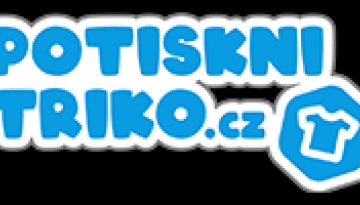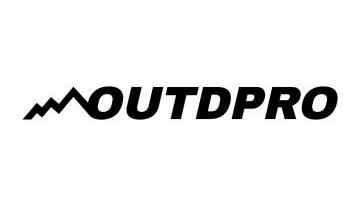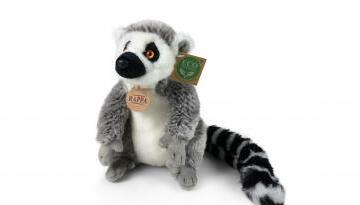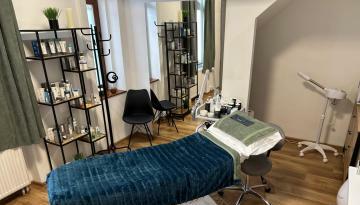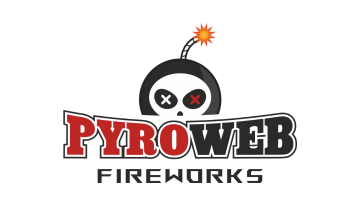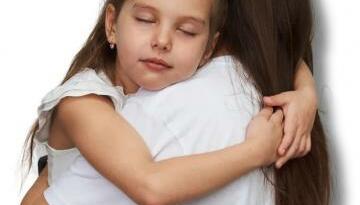Monitorujeme 1665 zdrojov
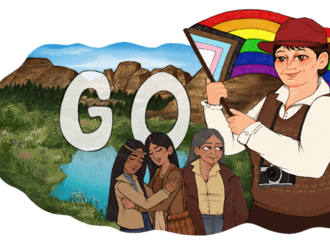
 Google Dooles 22.05.2023 07:31
Date: May 22, 2023
Today’s Doodle celebrates Barbara May Cameron, a Native American photographer, poet, writer, and human rights activist. The Doodle artwork is illustrated by queer Mexican and Chitimachan artist . On this day in 1954, Barbara Cameron was born in Fort Yates, North Dakota.
Cameron was born a member of the Hunkpapa group, one of the seven council fires of the Lakota tribe, and raised on the Standing Rock Reservation by her grandparents. After graduating high school, she studied photography and film at the American Indian Art Institute in Santa Fe, New Mexico. It was here that Cameron began winning awards in theater and media arts.
After coming out as a lesbian, Cameron moved to San Francisco in 1973 and advocated for LGBTQIA+ acceptance in the Native American community and addressed racism in queer spaces. In 1975, she co-founded Gay American Indians — the first ever dedicated Native American LGBTQIA+ group — with her friend and fellow activist Randy Burns.
Cameron took part in various programs to promote human welfare. From 1980 through 1985, she organized the Lesbian Gay Freedom Day Parade and Celebration. She also co-led a lawsuit against the Immigration & Naturalization Service which had a policy of turning away gay people. The case went before the Supreme Court and ruled in favor of Barbara and her co-plaintiffs who made persuasive arguments for change.
A few years later, she became an executive director at Community United Against Violence, where she supported people affected by hate crimes and domestic violence. The San Francisco Mayor appointed Cameron to both the Citizens Committee on Community Development and the San Francisco Human Rights Commission in 1988, and the next mayor appointed her to the United Nations Commission on the Status of Women.
HIV/AIDS disproportionately impacted Native people in the early 1990s, so Cameron stepped up to lead the charge. She was active within the San Francisco AIDS Foundation, the American Indian AIDS Institute, and served as a consultant to the U.S. Department of Health and Human Services and the Centers for Disease Control, helping with AIDS and childhood immunization programs.
Cameron is remembered for her passionate writing and speeches, many of which are housed at the San Francisco Public Library. Her words live on through her essay, No Apologies: A Lakota Lesbian Perspective which is featured in Our Right To Love: A Lesbian Resource Book.
Happy birthday Barbara May Cameron, thank you for working tirelessly to improve human rights and for giving queer Indigenous people a place to feel safe and belong.
Special thanks to Barbara’s partner, Linda Boyd-Durkee, for her collaboration on this Doodle. Below she shares her thoughts on Cameron’s legacy.
People know the serious side of Barbara, because she was serious about justice, serious about the civil rights and safety of native people, of lesbian and gay people, of women. But she had her playful side, and the most tender heart.
She liked to set up her son Rhys to “shock” his mom with language some people would punish. She understood how a kid would love to be able to say a curse word, because she was still a kid at heart. While recovering from back surgery, she enjoyed Rhys’ video games. She was an excellent bridge player and a great cook; we spent whole weekends at rented houses in Bodega Bay, California, playing bridge, cooking and eating with friends on the beautiful Pacific coast.
She was devoted to animals. In the photo below, taken by her son, Rhys Cameron Boyd-Farrell, she’s holding Zizila, the cat, and Shelby, the dog. When we heard about a pair of kittens found in Golden Gate Park, we went to the flat where the kittens were kept in the bathroom , and she sat on the floor watching them until she had their names - Mahto and Zizila .
We adopted Shelby when her guardian, our friend, was dying of pancreatic cancer. We brought Shelby to see him on weekly visits for his remaining months. We traveled to her reservation for her naming ceremony — wherein a wisdom-keeper conducted a ceremony to ascertain her real Lakota name. We formed a circle around a blanket, on which gifts were offered to the ancestors, and all of us opened ourselves up for whatever energy showed up. Shelby the poodle was with us, and barked at the presence none of us could see.
In the ceremony, Barbara was named Wia Washte Wi, which means woman, good woman. This name was bestowed on her because she cared about others, and always worked to serve, manifesting the virtues of the warrior, thus being a good representative of her Hunkpapa people.
There are people all over the country who were impressed by something that she said in a talk to a college class in Women’s History or Native History, or at an AIDS conference or a LAFA event or anywhere else that Barbara spoke. Our hope for her legacy is that those who were so moved will honor her by standing up for the lives to which she dedicated hers.
-Linda Boyd-Durkee
Pictured: Barbara May Cameron with her cat and dog
Courtesy of Rhys Cameron Boyd-Farrell
Guest Artist Q&A with Sienna Gonzales
Today’s Doodle was illustrated by guest artist . Below, she shares her thoughts behind the making of this Doodle:
Q. Tell us a bit about your experience working on this Doodle. What did you enjoy, and what did you find challenging? How was it different from other projects?
A: It was an absolute privilege to depict Barbara May Cameron and pay tribute to her as a champion for queer Native American visibility. One aspect I particularly enjoyed was delving into research on period-accurate clothing for both sides of the drawing. It was fascinating to discover the similarities in fashion trends despite the physical distance between Barbara's reservation and the vibrant city where she spent most of her life. However, one of the challenges I faced was adapting my usual penchant for tiny details, as I had to consider the different scales at which this Doodle would be displayed.
Q. Did you learn anything surprising or noteworthy while researching for this Doodle?
A: As a queer woman of color, this project served as a powerful reminder that intersectional activism has a rich history that predates my personal awareness. It was both surprising and noteworthy to discover that individuals like Barbara have been courageously raising their voices and effecting change for much longer than I had realized. Their ongoing commitment inspires me in my own journey.
Q. Can you describe your art-making process? What materials/equipment do you use?
A: For my art-making process, I utilize Procreate on my iPad Pro. Throughout the creation of this Doodle, I relied on just two brushes: a hard airbrush and a textured pencil. I strive to replicate the essence of traditional art within the digital realm, as it imparts a tactile quality to my pieces. Limiting myself to only two or three brushes per artwork allows me to maintain this approach. Additionally, I prefer hand coloring rather than relying on color dropping, as it closely resembles the techniques I employ with colored pencils.
Q. Any other thoughts you'd like to share?
A: One aspect that truly resonates with me about Barbara's story is her unwavering connection to her roots. It serves as a powerful reminder that I, too, can embrace and honor both my queerness and my indigenous background without having to choose between them. While my family has unfortunately lost much of our connection to our Chitimachan heritage, I find solace in knowing that my resilience and boundless optimism serve as my own personal tribute to the sacrifices of those who came before me. It's a testament to their enduring legacy, and I strive to carry it forward with pride.
Location:
Tags:
Google Dooles 22.05.2023 07:31
Date: May 22, 2023
Today’s Doodle celebrates Barbara May Cameron, a Native American photographer, poet, writer, and human rights activist. The Doodle artwork is illustrated by queer Mexican and Chitimachan artist . On this day in 1954, Barbara Cameron was born in Fort Yates, North Dakota.
Cameron was born a member of the Hunkpapa group, one of the seven council fires of the Lakota tribe, and raised on the Standing Rock Reservation by her grandparents. After graduating high school, she studied photography and film at the American Indian Art Institute in Santa Fe, New Mexico. It was here that Cameron began winning awards in theater and media arts.
After coming out as a lesbian, Cameron moved to San Francisco in 1973 and advocated for LGBTQIA+ acceptance in the Native American community and addressed racism in queer spaces. In 1975, she co-founded Gay American Indians — the first ever dedicated Native American LGBTQIA+ group — with her friend and fellow activist Randy Burns.
Cameron took part in various programs to promote human welfare. From 1980 through 1985, she organized the Lesbian Gay Freedom Day Parade and Celebration. She also co-led a lawsuit against the Immigration & Naturalization Service which had a policy of turning away gay people. The case went before the Supreme Court and ruled in favor of Barbara and her co-plaintiffs who made persuasive arguments for change.
A few years later, she became an executive director at Community United Against Violence, where she supported people affected by hate crimes and domestic violence. The San Francisco Mayor appointed Cameron to both the Citizens Committee on Community Development and the San Francisco Human Rights Commission in 1988, and the next mayor appointed her to the United Nations Commission on the Status of Women.
HIV/AIDS disproportionately impacted Native people in the early 1990s, so Cameron stepped up to lead the charge. She was active within the San Francisco AIDS Foundation, the American Indian AIDS Institute, and served as a consultant to the U.S. Department of Health and Human Services and the Centers for Disease Control, helping with AIDS and childhood immunization programs.
Cameron is remembered for her passionate writing and speeches, many of which are housed at the San Francisco Public Library. Her words live on through her essay, No Apologies: A Lakota Lesbian Perspective which is featured in Our Right To Love: A Lesbian Resource Book.
Happy birthday Barbara May Cameron, thank you for working tirelessly to improve human rights and for giving queer Indigenous people a place to feel safe and belong.
Special thanks to Barbara’s partner, Linda Boyd-Durkee, for her collaboration on this Doodle. Below she shares her thoughts on Cameron’s legacy.
People know the serious side of Barbara, because she was serious about justice, serious about the civil rights and safety of native people, of lesbian and gay people, of women. But she had her playful side, and the most tender heart.
She liked to set up her son Rhys to “shock” his mom with language some people would punish. She understood how a kid would love to be able to say a curse word, because she was still a kid at heart. While recovering from back surgery, she enjoyed Rhys’ video games. She was an excellent bridge player and a great cook; we spent whole weekends at rented houses in Bodega Bay, California, playing bridge, cooking and eating with friends on the beautiful Pacific coast.
She was devoted to animals. In the photo below, taken by her son, Rhys Cameron Boyd-Farrell, she’s holding Zizila, the cat, and Shelby, the dog. When we heard about a pair of kittens found in Golden Gate Park, we went to the flat where the kittens were kept in the bathroom , and she sat on the floor watching them until she had their names - Mahto and Zizila .
We adopted Shelby when her guardian, our friend, was dying of pancreatic cancer. We brought Shelby to see him on weekly visits for his remaining months. We traveled to her reservation for her naming ceremony — wherein a wisdom-keeper conducted a ceremony to ascertain her real Lakota name. We formed a circle around a blanket, on which gifts were offered to the ancestors, and all of us opened ourselves up for whatever energy showed up. Shelby the poodle was with us, and barked at the presence none of us could see.
In the ceremony, Barbara was named Wia Washte Wi, which means woman, good woman. This name was bestowed on her because she cared about others, and always worked to serve, manifesting the virtues of the warrior, thus being a good representative of her Hunkpapa people.
There are people all over the country who were impressed by something that she said in a talk to a college class in Women’s History or Native History, or at an AIDS conference or a LAFA event or anywhere else that Barbara spoke. Our hope for her legacy is that those who were so moved will honor her by standing up for the lives to which she dedicated hers.
-Linda Boyd-Durkee
Pictured: Barbara May Cameron with her cat and dog
Courtesy of Rhys Cameron Boyd-Farrell
Guest Artist Q&A with Sienna Gonzales
Today’s Doodle was illustrated by guest artist . Below, she shares her thoughts behind the making of this Doodle:
Q. Tell us a bit about your experience working on this Doodle. What did you enjoy, and what did you find challenging? How was it different from other projects?
A: It was an absolute privilege to depict Barbara May Cameron and pay tribute to her as a champion for queer Native American visibility. One aspect I particularly enjoyed was delving into research on period-accurate clothing for both sides of the drawing. It was fascinating to discover the similarities in fashion trends despite the physical distance between Barbara's reservation and the vibrant city where she spent most of her life. However, one of the challenges I faced was adapting my usual penchant for tiny details, as I had to consider the different scales at which this Doodle would be displayed.
Q. Did you learn anything surprising or noteworthy while researching for this Doodle?
A: As a queer woman of color, this project served as a powerful reminder that intersectional activism has a rich history that predates my personal awareness. It was both surprising and noteworthy to discover that individuals like Barbara have been courageously raising their voices and effecting change for much longer than I had realized. Their ongoing commitment inspires me in my own journey.
Q. Can you describe your art-making process? What materials/equipment do you use?
A: For my art-making process, I utilize Procreate on my iPad Pro. Throughout the creation of this Doodle, I relied on just two brushes: a hard airbrush and a textured pencil. I strive to replicate the essence of traditional art within the digital realm, as it imparts a tactile quality to my pieces. Limiting myself to only two or three brushes per artwork allows me to maintain this approach. Additionally, I prefer hand coloring rather than relying on color dropping, as it closely resembles the techniques I employ with colored pencils.
Q. Any other thoughts you'd like to share?
A: One aspect that truly resonates with me about Barbara's story is her unwavering connection to her roots. It serves as a powerful reminder that I, too, can embrace and honor both my queerness and my indigenous background without having to choose between them. While my family has unfortunately lost much of our connection to our Chitimachan heritage, I find solace in knowing that my resilience and boundless optimism serve as my own personal tribute to the sacrifices of those who came before me. It's a testament to their enduring legacy, and I strive to carry it forward with pride.
Location:
Tags:
NEWS.SK odporúča
Top firmy
Nie sú nájdené žiadne články.
Nie sú nájdené žiadne články.










